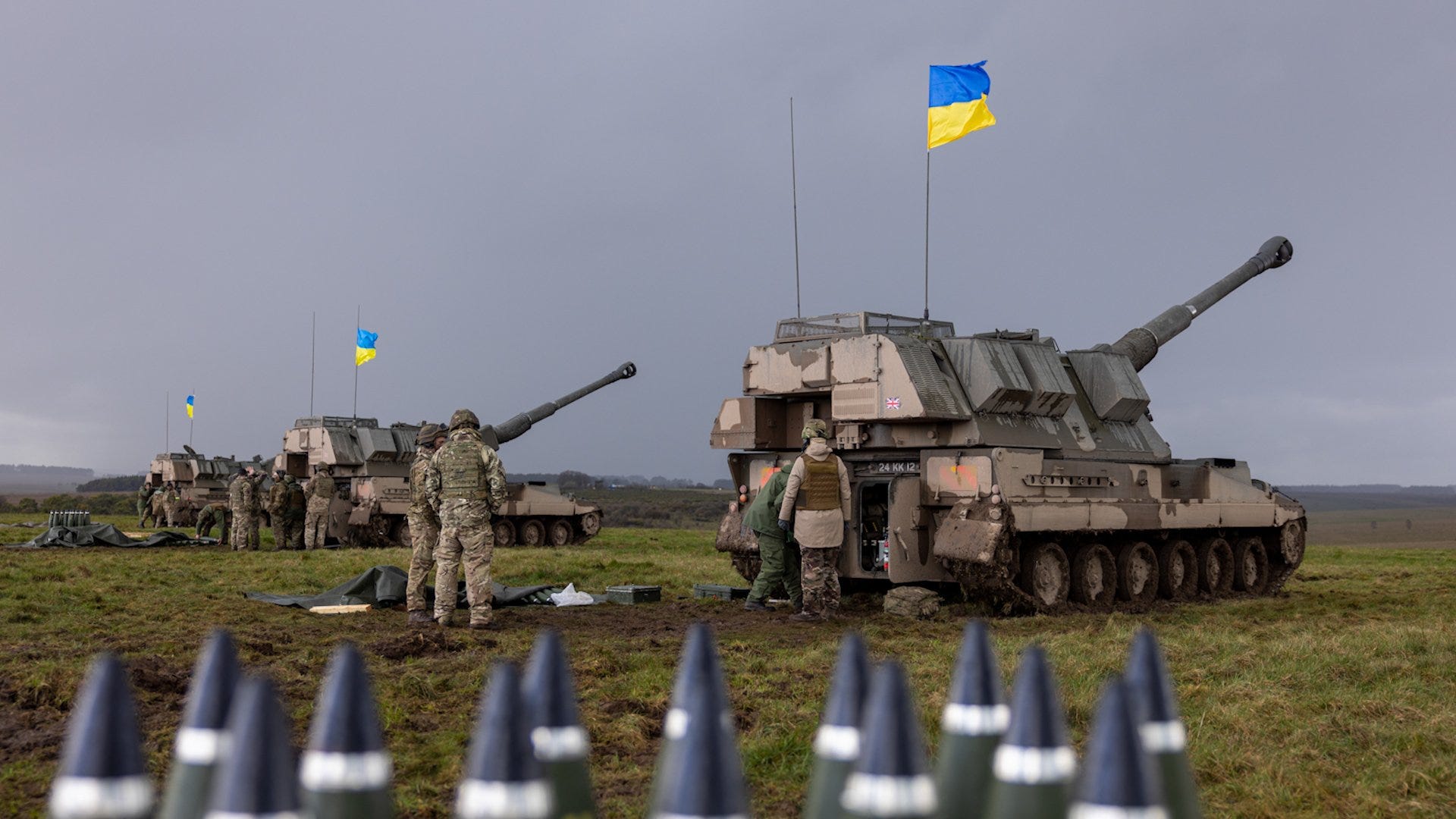Britain’s Big Guns: The AS-90s Are Officially Ukraine’s Now
UK has effectively written the last chapter on its Cold War artillery workhorse and handed the book to Kyiv.

The paperwork finally caught up to reality.
A Freedom of Information Act response from the UK Ministry of Defense quietly confirmed what many had suspected: every single AS-90 self-propelled howitzer left in British service (all 99 of them!) now belongs to Ukraine.
The disclosure came through bureaucracy, stamped and scanned, released to a persistent citizen under FOIA and posted online like a classified relic.
But it confirms something bigger: It means Britain has effectively written the last chapter on its Cold War artillery workhorse and handed the book to Kyiv.
The Gun That Hit Above Its Weight
The AS-90 was born in the late 1980s, when the British Army wanted something faster and meaner than the aging M109s it had relied on for decades. Vickers Defense Systems (now BAE) delivered a 45-ton tracked gun that could sprint to a new position at 55 km/h and lob a 155-mm shell nearly 25 kilometers downrange.
That was the short barrel version.
Fit it with a 52-caliber gun, load modern NATO ammunition, and suddenly you’re hitting targets past 30 kilometers with base-bleed rounds.
Base bleed is a system used on some artillery shells to increase range, typically by about 20%–35%. It expels gas into the low-pressure area behind the shell to reduce base drag (but does not produce thrust, unlike rocket-assisted projectiles).
In the right hands, and with the right fire control, the AS-90 could drop three rounds on the same target in under ten seconds; a trick called “multiple round simultaneous impact.”
The AS-90 was the definition of British stubbornness: thick armor, quick setup, and a hydraulic loading system that kept human fatigue out of the equation.
The crew of five could go from travel to fire in under a minute.
For Ukraine, that’s gold. Every second matters when you’re exchanging artillery with Russia’s counter-battery radars. The quicker you shoot and scoot, the longer you live.
When the war in Ukraine started, the UK had roughly a hundred AS-90s still in operation and a few dozen awaiting disposal.
The FOIA document now confirms what the rumor mill had been saying since early 2024: every active one has crossed the Channel.
Britain had already begun fielding its replacement, the German-built Archer system, and the AS-90s were sitting at the edge of retirement. Rather than scrap them, London sent them east, where the guns could finish their service life doing what they were built for: firing at Russians.
The FOIA release also acknowledged the transfer of 28 M109A4BE howitzers and 54 L119 towed guns… a total that makes the UK one of Ukraine’s most significant artillery donors.
In Ukraine’s artillery doctrine, these fill a crucial niche between Soviet-era 2S3 Akatsiyas and modern NATO systems like the French CAESAR and German PzH 2000.
The AS-90 can fire NATO-standard shells, meaning logistics align cleanly with other Western guns already in theater. Its 155-mm L31 high-explosive shell weighs about 43 kilograms; heavy enough to wreck fortified positions, light enough to mass produce.




